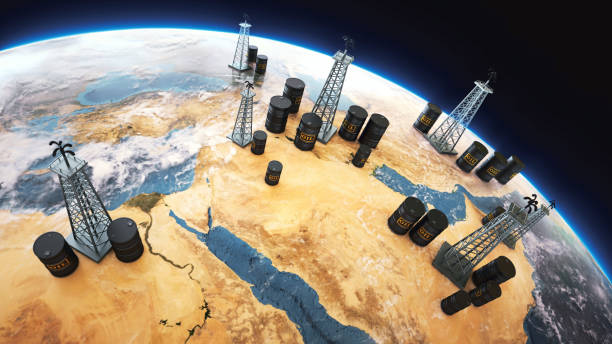Inflation, oil crises, and geopolitical tensions have historically acted as powerful catalysts for gold’s performance, driving its value higher during times of economic and political uncertainty. From the inflationary 1970s to modern conflicts affecting global energy markets, these factors have consistently pushed investors toward gold as a reliable hedge and safe-haven asset. The interplay of rising prices, energy disruptions, and geopolitical instability underscores gold’s enduring appeal as a stabilizing force in volatile markets, providing valuable lessons for today’s investors.

Inflation: Gold’s Role as a Hedge
- The Inflationary 1970s:
- Gold’s dramatic rise in the 1970s, culminating in its record 1980 price of $850 per ounce, was fueled by double-digit inflation in the U.S.
- The erosion of purchasing power and declining confidence in fiat currencies made gold a preferred store of value.
- Modern Parallels:
- Persistent inflation in recent years, exacerbated by pandemic stimulus measures and supply chain disruptions, has renewed interest in gold as an inflation hedge.
Oil Crises and Their Ripple Effects
- 1973 and 1979 Oil Shocks:
- The oil embargo of 1973 and the Iranian Revolution in 1979 caused energy prices to skyrocket, triggering global inflation and economic uncertainty.
- These events destabilized financial markets, driving gold prices higher as investors sought refuge from the volatility.
- Energy as a Modern Driver:
- Recent spikes in oil prices due to geopolitical conflicts, such as the Russia-Ukraine war, have mirrored the dynamics of past oil crises, boosting gold demand.
Geopolitical Tensions and Safe-Haven Demand
- Historical Context:
- The Cold War, Middle East conflicts, and the Iranian hostage crisis of the 1970s and 1980s heightened fears of instability, leading to significant gold price rallies.
- Ongoing Geopolitical Risks:
- In the 21st century, events such as the Global War on Terror, the rise of U.S.-China tensions, and regional conflicts have consistently bolstered gold’s safe-haven appeal.
The Interplay of Catalysts
- Compounding Effects:
- Inflation, oil crises, and geopolitical tensions often occur simultaneously, amplifying their impact on gold prices.
- For example, the 1979 Iranian Revolution sparked both an oil crisis and geopolitical instability, creating a perfect storm for gold’s meteoric rise.
- Investor Psychology:
- During uncertain times, the perception of gold as a reliable asset intensifies, driving speculative and long-term demand.
Lessons for Investors
- Understanding the Catalysts:
- Recognizing the factors that drive gold prices can help investors make informed decisions and capitalize on opportunities.
- Preparing for the Future:
- Given the recurring nature of inflation, oil crises, and geopolitical tensions, maintaining exposure to gold in diversified portfolios remains a prudent strategy.
Gold’s performance during periods of economic and political turmoil demonstrates its enduring resilience and relevance. As a hedge against uncertainty, it continues to shine in the face of inflation, energy crises, and global conflicts.
